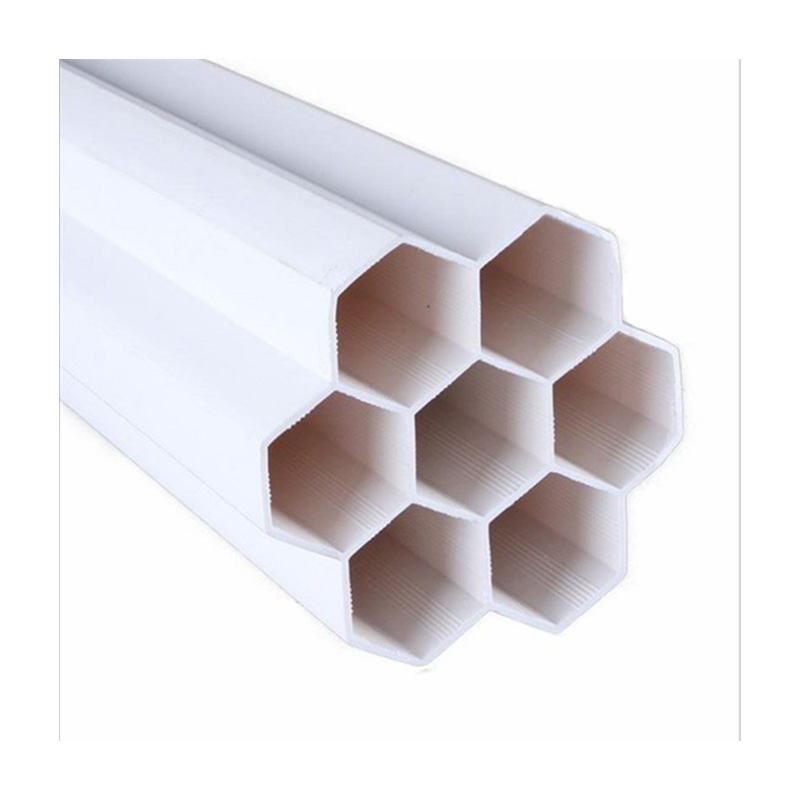What Makes PVC Fittings the Smart Choice for Modern Plumbing and Construction?
PVC fittings, or polyvinyl chloride fittings, are critical components in modern plumbing, construction, and industrial piping systems. These connectors are designed to join, redirect, or control the flow of fluids through PVC pipes. Due to their durability, chemical resistance, and cost-effectiveness, PVC fittings have become one of the most commonly used components across residential, commercial, and agricultural projects. They play an essential role in ensuring leak-free systems, easy installation, and long service life, making them a cornerstone in the global water management and construction industries.
PVC fittings come in various forms, including elbows, tees, couplings, adaptors, reducers, and caps. Their lightweight nature allows for easier handling compared to metal fittings, while their corrosion resistance ensures consistent performance even in harsh or corrosive environments.
PVC fittings are typically manufactured through injection molding processes that ensure dimensional precision and mechanical strength. They are compatible with both pressure and non-pressure applications, from potable water distribution to chemical transportation lines.
Key Product Parameters of PVC Fittings:
| Parameter | Specification | Description |
|---|---|---|
| Material | Polyvinyl Chloride (PVC-U or PVC-C) | High-strength, corrosion-resistant plastic |
| Sizes Available | ½ inch to 24 inches | Wide range for residential and industrial use |
| Temperature Range | -15°C to +60°C | Suitable for most water and fluid systems |
| Pressure Rating | Up to 450 PSI (varies by design) | Suitable for both low and high-pressure applications |
| Connection Type | Solvent weld, threaded, or flanged | Multiple installation methods |
| Standards Compliance | ASTM D2466, ISO 1452 | Meets global plumbing standards |
| Applications | Water supply, irrigation, drainage, chemical processing, HVAC systems | Broad industrial and residential use |
| Color Options | White, gray, blue | Commonly used for identification or aesthetics |
PVC fittings are integral in systems that require long-term durability, minimal maintenance, and cost efficiency. They replace traditional metal fittings that may corrode, leak, or degrade over time, thus offering a longer lifespan and better reliability.
Why Are PVC Fittings the Preferred Solution in Modern Construction and Industry?
The growing popularity of PVC fittings is not just due to affordability—it’s a result of their performance, safety, and environmental compatibility. PVC fittings address several pain points in modern infrastructure, particularly in applications where longevity and corrosion resistance are crucial.
1. Durability and Corrosion Resistance:
Unlike metal fittings, PVC fittings do not rust, corrode, or scale over time. This makes them ideal for water systems, chemical pipelines, and irrigation networks exposed to harsh conditions. Their non-reactive surface ensures clean water flow and prevents contamination.
2. Lightweight and Easy Installation:
PVC fittings are up to five times lighter than traditional metal options. This reduces transportation costs and simplifies installation, as they can be fitted using simple tools and solvent cement rather than welding or specialized machinery.
3. Cost-Effectiveness:
PVC fittings are significantly more affordable than copper, brass, or steel alternatives. Their long service life and minimal maintenance requirements further enhance their overall value, offering one of the lowest life-cycle costs in piping systems.
4. Versatility Across Applications:
PVC fittings are used in plumbing, irrigation, HVAC, wastewater management, and even electrical conduit systems. Their versatility across environments makes them a universal solution for both indoor and outdoor projects.
5. Eco-Friendly Characteristics:
PVC is recyclable and requires less energy to produce compared to many metal-based materials. Additionally, its extended service life reduces waste, aligning with sustainable construction goals worldwide.
6. Chemical Resistance:
PVC fittings can handle a variety of chemicals, acids, and bases without degrading, making them suitable for laboratories, chemical processing plants, and water treatment facilities.
7. Leak-Proof Design:
With solvent welding or threaded connections, PVC fittings create tight, leak-free seals. This ensures efficient system performance and prevents water loss, a crucial factor in sustainable plumbing design.
8. Fire Safety and Low Conductivity:
PVC is non-conductive and has self-extinguishing properties, making it a safe choice in electrical and industrial installations.
By combining these benefits, PVC fittings deliver performance that meets the needs of modern infrastructure while maintaining efficiency and sustainability.
How Are PVC Fittings Evolving to Meet Future Industry Demands?
The future of PVC fittings lies in technological innovation, sustainability, and enhanced design. As industries move toward greener and smarter infrastructure, PVC fittings continue to evolve in both material science and manufacturing methods.
1. Advanced Material Formulations:
Manufacturers are developing modified PVC compounds that can withstand higher pressures and temperatures. CPVC (Chlorinated Polyvinyl Chloride) is one such innovation, offering improved thermal stability for hot water applications and industrial fluid systems.
2. Smart Manufacturing and Precision Molding:
Automation and precision molding ensure better dimensional accuracy and performance consistency in PVC fittings. This reduces production waste and improves quality control, meeting stringent international standards.
3. Sustainable Production:
Future trends emphasize recyclable PVC materials and lower carbon manufacturing processes. Many producers are shifting toward eco-friendly formulations that reduce environmental impact while maintaining mechanical strength and durability.
4. Integration with Smart Systems:
PVC fittings are increasingly being integrated into smart water management and IoT-based systems. These allow for remote monitoring of flow rates, pressure, and system efficiency, improving maintenance and reducing downtime.
5. Global Demand and Market Growth:
The global PVC fittings market is projected to grow steadily due to rapid urbanization, rising construction activities, and the need for sustainable plumbing solutions. Emerging economies are particularly driving demand for cost-efficient and durable piping systems.
6. Custom Design and Modular Systems:
Future PVC fittings are expected to feature modular designs that allow for faster assembly, flexibility in layout, and compatibility across different system standards. This evolution aligns with the growing demand for prefabricated plumbing and HVAC systems.
7. Industry Compliance and Safety:
Continuous improvements in compliance with ASTM, ISO, and DIN standards ensure that modern PVC fittings are safe, reliable, and globally accepted for both residential and industrial applications.
PVC fittings are no longer just simple connectors—they represent a growing segment of engineered materials designed to meet the future’s performance, safety, and environmental expectations.
Common Questions About PVC Fittings
Q1: What are the main differences between PVC and CPVC fittings?
A: PVC and CPVC fittings are both made from polyvinyl chloride, but CPVC is chlorinated to enhance its temperature resistance. While PVC fittings are ideal for cold and room-temperature water systems, CPVC can handle hot water and industrial fluids up to 93°C. CPVC also offers slightly improved chemical resistance, but both share similar ease of installation and durability.
Q2: How long do PVC fittings typically last?
A: PVC fittings can last between 50 to 100 years, depending on the environmental conditions, fluid type, and installation quality. Properly installed fittings exposed to mild temperatures and clean water sources generally maintain full integrity for decades without corrosion or significant wear.
Conclusion: Why EastBoom Is a Trusted Partner in PVC Fittings
PVC fittings have transformed modern plumbing and industrial systems by providing a solution that combines efficiency, durability, and affordability. Their versatility across different sectors—residential, industrial, agricultural, and commercial—makes them a cornerstone in infrastructure development. As global demands shift toward sustainability and intelligent systems, PVC fittings will continue to adapt, offering higher performance and eco-friendly solutions.
EastBoom is dedicated to providing premium-quality PVC fittings that meet global standards for reliability, safety, and longevity. With advanced manufacturing techniques, rigorous testing, and an unwavering commitment to innovation, EastBoom ensures every fitting performs optimally in any application—whether for water distribution, drainage, or industrial fluid control.
For high-quality PVC fittings tailored to your project needs, Contact Us today to learn more about our product range, customization options, and expert technical support.





